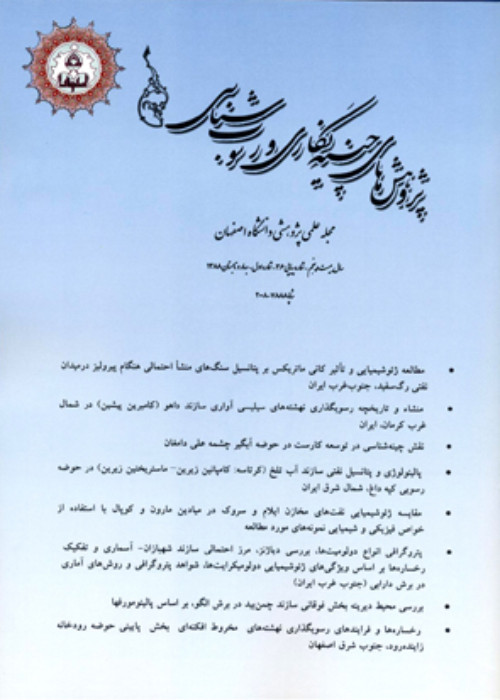Integrating sedimentologic data and stable isotope geochemistry to comprehend the sequence stratigraphic framework of the Middle–Upper Jurassic Sargelu and Najmah formations in NW Kermanshah (Howramanat, Dowdan and Kezi sections)
In this study, by integrating sedimentologic data with geochemical data, the sequence stratigraphy framework of the Sargelu and Najmah formations in the Hawraman region of NW Kermanshah were studied. Three depositional sequences of the type “T/R facies cycles” including TR1–TR3 were recognized in the Sargelu Formation. The occurrenceof dark, organic-rich shale and bituminous limestone in these sequences together with depleted δ13C values with some striking negative excursionsin intervals with outer shelf/basin facies indicates a rapidly enhancing accommodationspace during the development of these depositional sequences leading to the prevalenceof deep marine deposition, particularly during the transgressive systems tracts (TSTs). In addition, three other T/R facies cycles were recognized in the Najmah Formation. Facies stacking patterns and internal architecture of these depositional sequences along with the existence of peaks in the δ13C to heavier values suggests their deposition during limited accommodationspace. At the contact between the Sargelu and Najmah formations, there occurreda positive peak in δ18O, which most likely is an indication of a local climate change at the Middle-Late Jurassic interface. The correlation of depositional trends of the TST and RST with that of δ13C may show that eustatic acted as the main control on the variations of δ13C.
- حق عضویت دریافتی صرف حمایت از نشریات عضو و نگهداری، تکمیل و توسعه مگیران میشود.
- پرداخت حق اشتراک و دانلود مقالات اجازه بازنشر آن در سایر رسانههای چاپی و دیجیتال را به کاربر نمیدهد.


